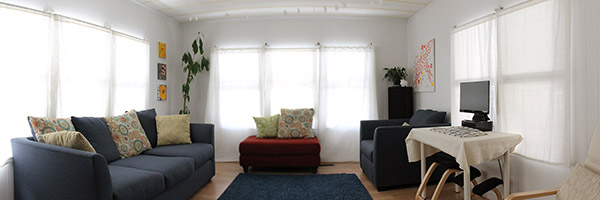Couch

I just turned 30 years old last month and it seemed like a good time to reflect on my life. My life is amazing, and it’s mostly because of luck. The primary reason is simply that I ended up living in one of the richest countries in the world – the U.S.A. This alone makes my quality of life enormously higher than that of the vast majority of people on the planet; for example, the U.S. GDP per capita is around $55,000 per year, while the world average is around $15,000 per capita per year.1 Without working any harder than people in other countries, my income is roughly $40,000/year; this places me in the richest 2% of the world’s wage earners.2 By world standards, my salary provides a superbly comfortable living for me and my soon-to-be wife.It really is an amazing luxury to have air conditioning, a dish-washer, a second TV … I wouldn’t have realized it if I hadn’t lived outside of the US until the age of 10. So when I consider spending money on myself, I am often guided by the question “what is enough?” Last year we finally figured out where we wanted to live for at least a decade and bought a house. Even though New Jersey is one of the most expensive real-estate markets, we were able to find a 30-year-old, 920-square-foot, (stationary) mobile home for $50,000. By choosing a more-humble abode, we saved at least a few hundred thousand dollars without noticeably lowering our quality of life!
This brings me to my couch. We already had a couch left over from the previous owner of the house and it worked well: it was clean and comfortable. But it wasn’t our style. So we spent several hours shopping (online and in stores), and ended up finding a replacement for just $900: a couch, a loveseat, and an ottoman that we loved. But this story isn’t primarily about praising frugality; it’s about the sobering and humbling realization that a $900 couch, that’s not in any way a necessity, is considered a frugal purchase in America.
This by itself might not be shocking, until you put it in context. In Sub-Saharan Africa, almost 70% of the population lives on less per day than what $2.00 can buy in the US.3 That means $900 could be more than what a family has to purchase food and other necessities for the entire year!
This dramatic contrast motivates me to find ways with which I can reliably help those less lucky than me. The most effective method I’ve found is to give money to charities that use research-based methods to help others. For example, if you donate $900 to the cost-effective Against Malaria Foundation4, the charity will provide almost 550 people5 protection from malaria for three to four years!
I have for the past five years given at least 10% of my income to the most cost-effective charity I could find (so far it has usually been AMF) and I plan to continue to do so for the rest of my working life. Furthermore, I’ve found other opportunities to give. For the past five years I’ve been doing a birthday for charity: I just request of my friends that if they want to give me a gift, they consider donating to my favorite charity instead. It’s very easy to set up6 and makes a world of a difference!
- The Economist: The Economist [return]
- GWWC: Giving What We Can [return]
- Gallup: Gallup [return]
- GiveWell: Against Malaria Foundation [return]
- TLYCS: Impact Calculator [return]
- Charity Science: Birthday Fundraisers [return]